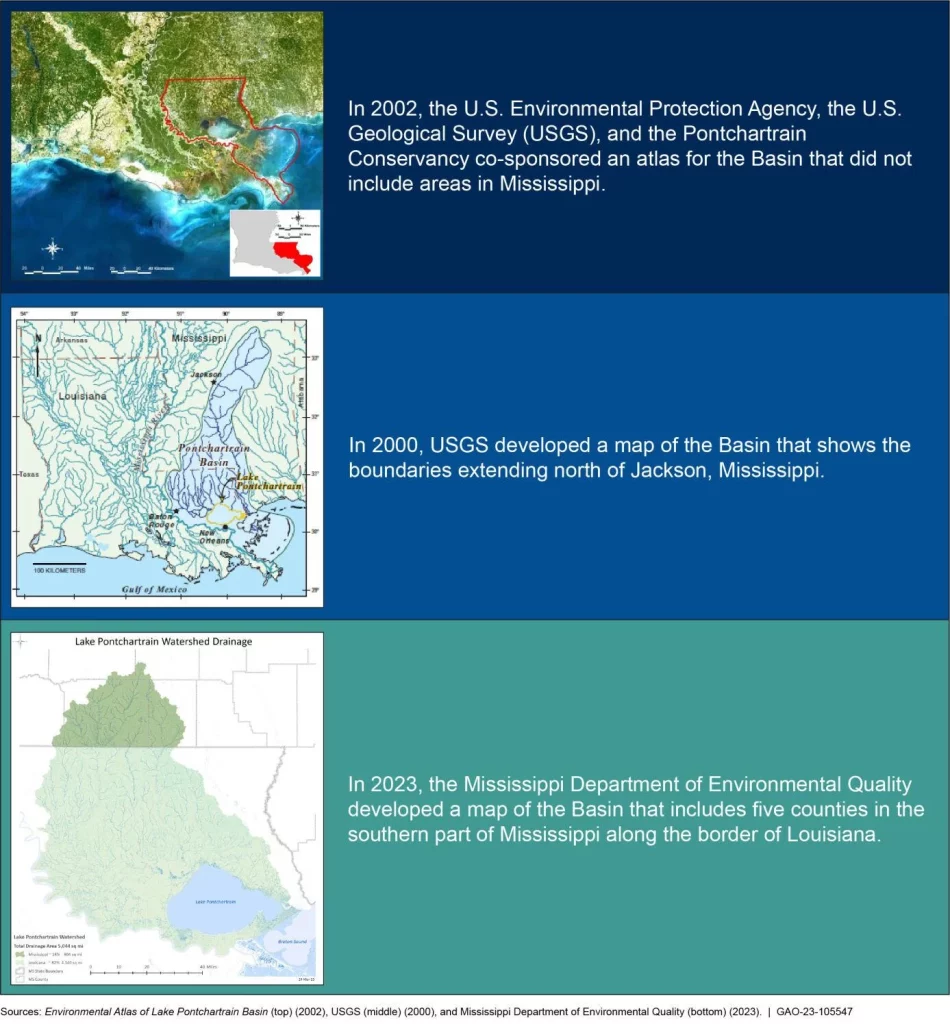
GOOGLE EARTH IMAGE
Where has the EPA oversight been.
Federal regulators have failed to adequately oversee a grant program that has dispensed $31 million over the last two decades to improve the health of the Lake Pontchartrain Basin, even as the program prepares to steeply increase its spending, the U.S. Government Accountability Office found in a new report. The Lake Pontchartrain Basin Restoration Program since 2000 has been dispensing small federal grants that aim to reduce pollution and saltwater intrusion in the basin’s waterways and slow land loss from subsidence and erosion. The grants are dispensed by the University of New Orleans Research and Technology Program and overseen by the U.S. Environmental Protection Agency.
nola.com
The GAO noted many problems.
The GAO, Congress’ auditing arm, found that there were numerous lapses in the EPA’s oversight. Among them: Never properly identifying the basin’s boundaries, Not determining whether grants met program goals or establishing performance measures to ensure they did and Failing to ensure the public understood how to apply for grants. The GAO also noted that the grants selected for funding were based on an outdated 1996 conservation and restoration plan created by the Lake Pontchartrain Basin Foundation, now the Pontchartrain Conservancy, under an earlier federal grant. That plan predated dramatic improvements in Lake Pontchartrain’s water quality that owed to a 1989 ban on dredging of the lake bottom and other measures to reduce pollution from runoff and sewage. The report also pointed out that the program was supposed to be overseen by a large and diverse board, including representatives of federal, state and local agencies, universities, and environmental business organizations, with a smaller executive committee recommending projects and overseeing plan updates. But board membership dwindled, and as of February, all that remained were six members of the executive committee, all representing New Orleans area organizations. In an August letter, an EPA official notified the UNO foundation that an EPA official would rejoin the executive committee as a voting member after an absence of several years.
These finding came as the program gets an influx of funding.
The federal findings come as the program is receiving a major increase in funding. The Infrastructure Investment and Jobs Act directs $53 million to the program, to be spent in five annual chunks of $10.3 million. The funds were added to the legislation by U.S. Sen. Bill Cassidy, R-La., who was one of 19 Republicans to support the bill. Carlton Dufrechou, who serves as chairman of the restoration program’s executive committee, agreed with the report’s recommendations and said incorporating them would benefit the program. Dufrechou is the former executive director of the Lake Pontchartrain Basin Foundation, and is now the executive director of the Causeway Commission. “Performance measures quantify progress; updating the comprehensive management plan will set new baselines and ID remaining/current problems; creating a website spreads the word about Basin conditions and status of projects; and getting more input is always useful,” The GAO report said a key problem for agencies applying for grants is confusion over the definition of the basin’s borders. The basin is supposed to include much of the area east of the Mississippi River, including Lakes Maurepas, Pontchartrain and Borgne.Dufrechou said.

The Government Accountability Office said it remains unclear what land is within the Lake Pontchartrain Basin, pointing to differing maps showing it includes only parts of Louisiana or also parts of Mississippi.
(GAO)
The definition of the basin is important.
The 2000 legislation defined the basin as including 5,000 square miles on the east side of the Mississippi River, including 16 Louisiana parishes and four Mississippi counties. But the legislation didn’t name the parishes or counties. In 2023, the definition was amended by Congress to say the basin includes a 10,000-square-mile watershed, but that amendment didn’t say which parishes and counties were included.
Lack of oversight and who complained?



